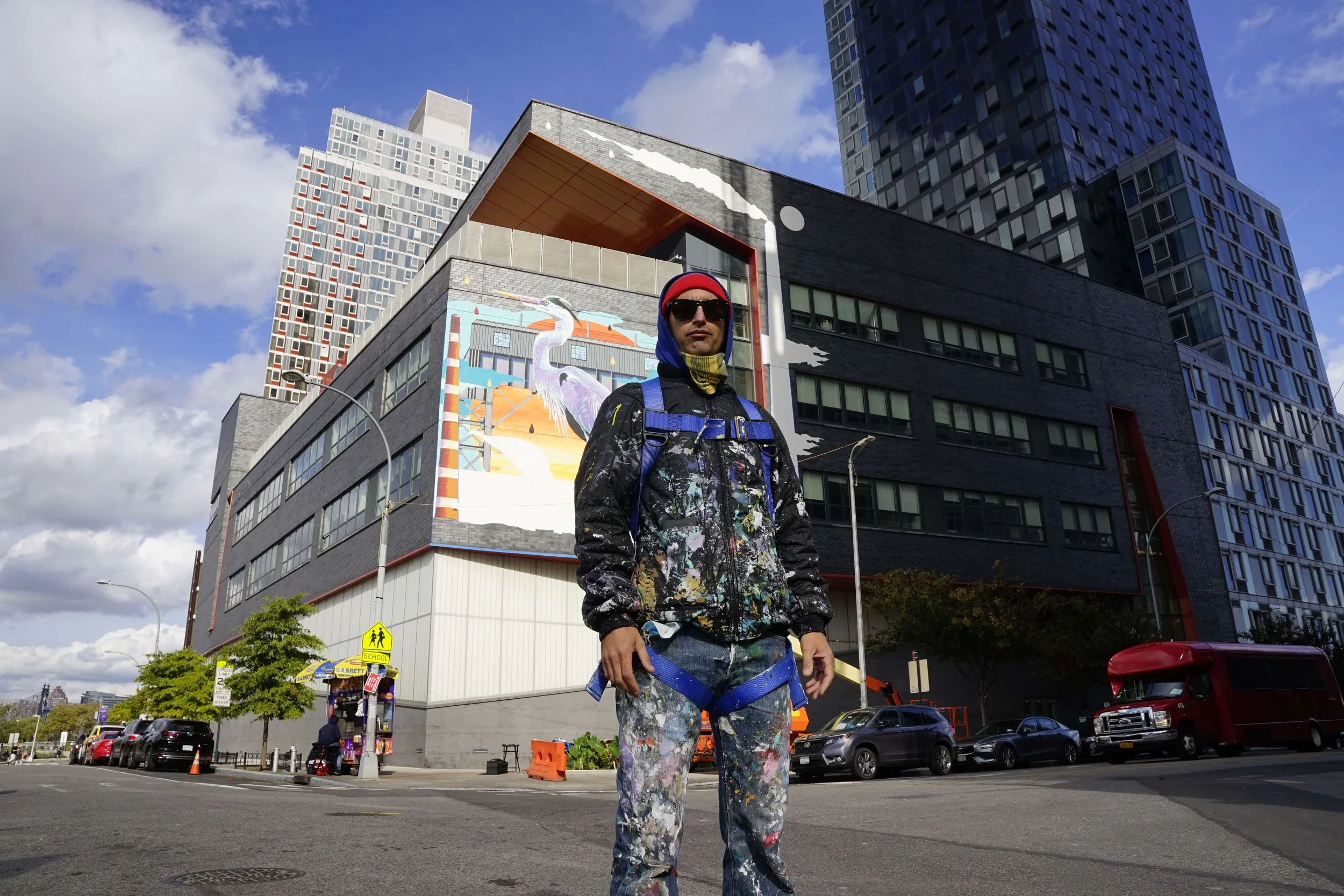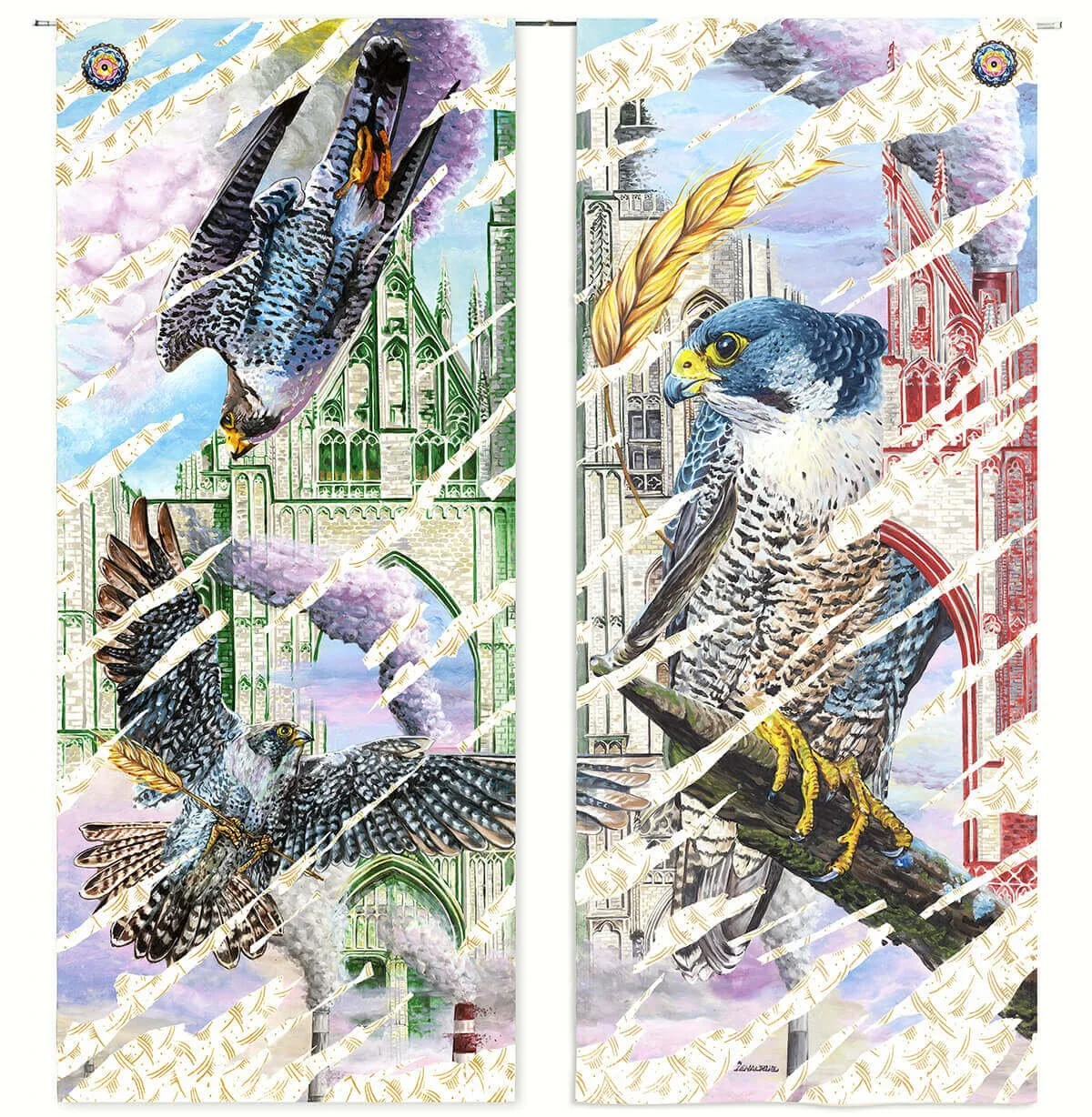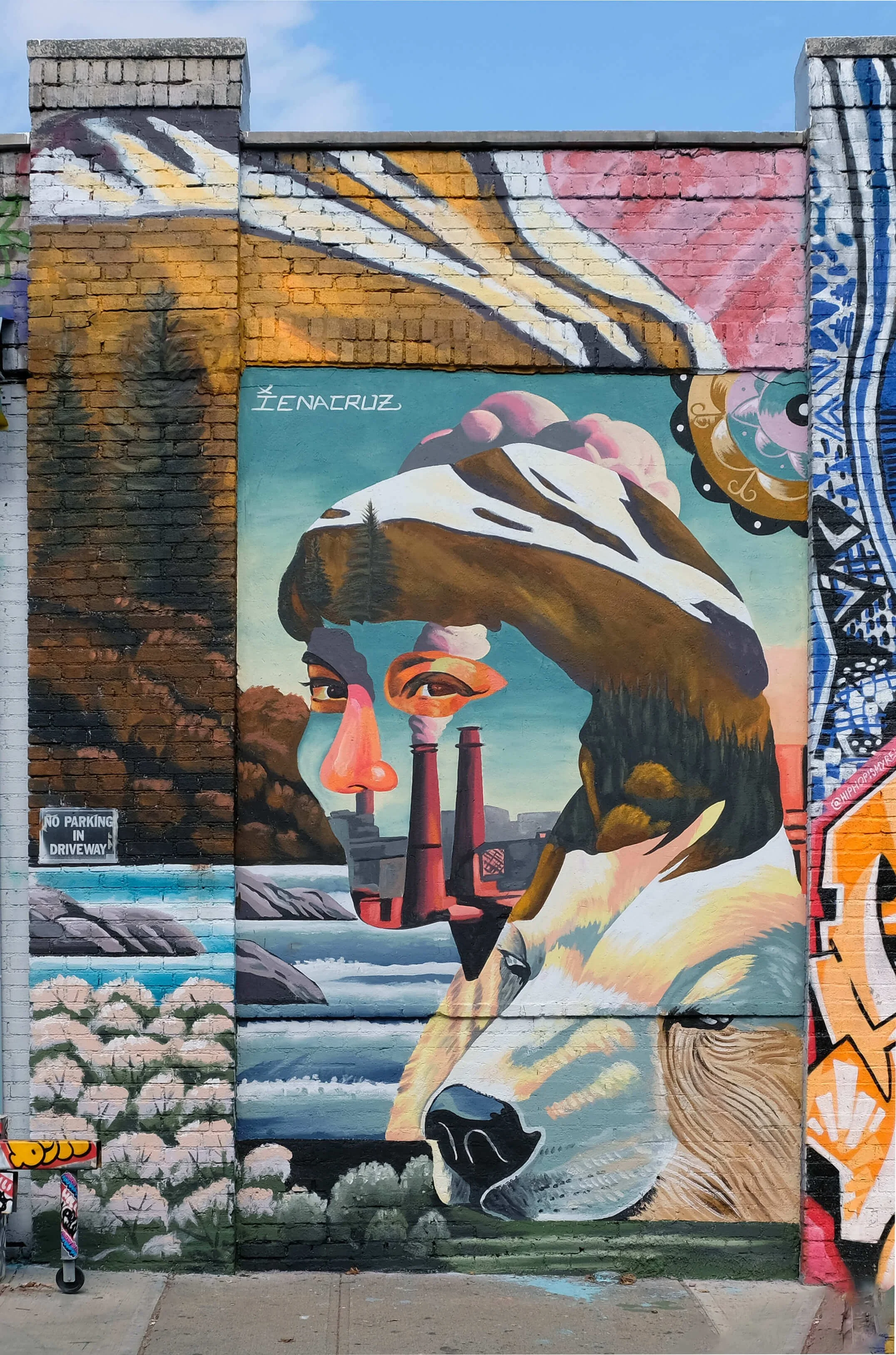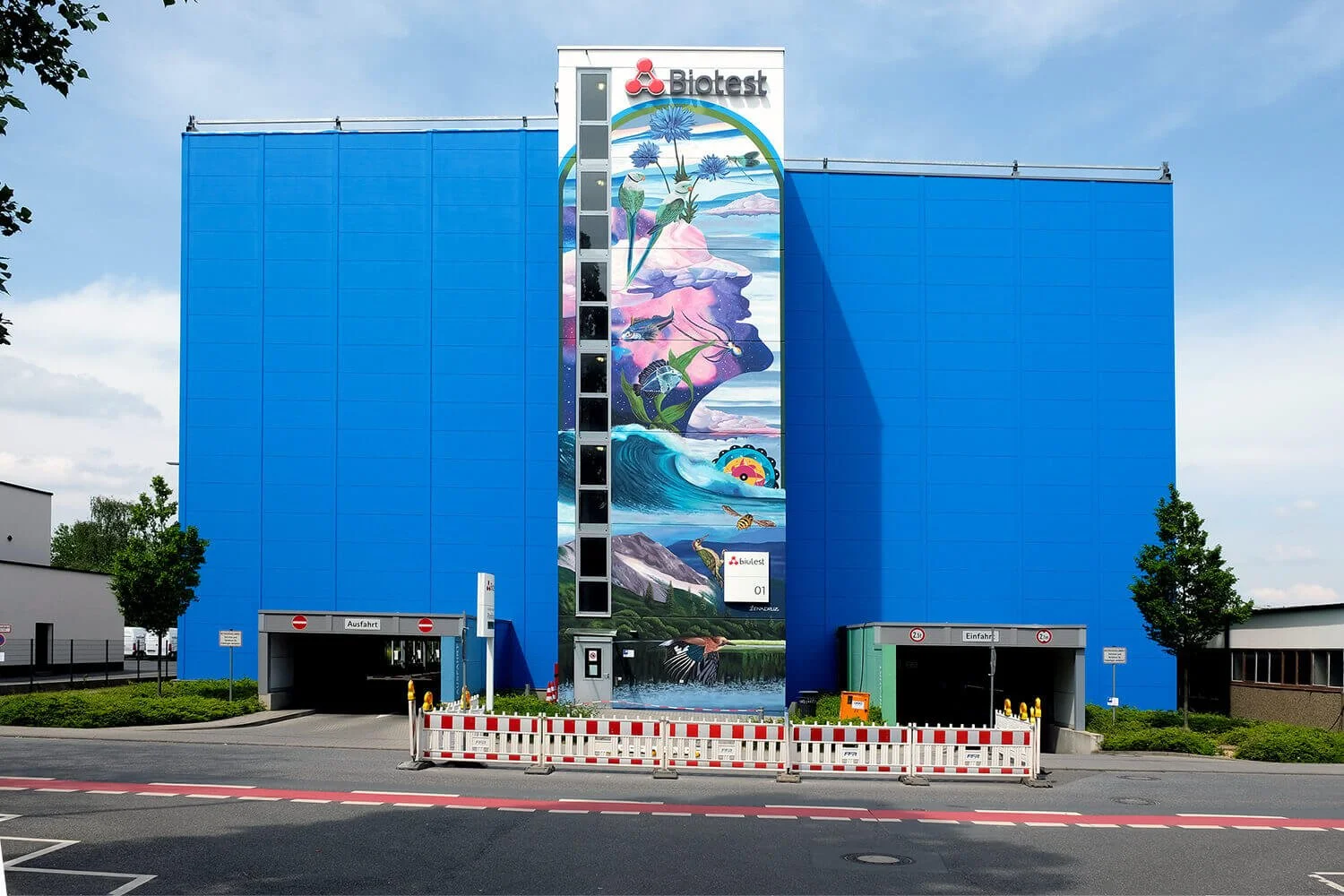A Conversation with Federico Massa a.k.a. Iena Cruz: Muralist, Visionary, and Environmental Storyteller
Federico Massa a.k.a. Iena Cruz is a globally recognized large-scale mural artist celebrated for his distinctive mural designs, commissioned for his unparalleled style blending untraditional media and technology to address crucial issues such as climate change and social-environmental justice. His expertise reflects a profound journey of dedicated study and commitment to artistic excellence, rooted in his Italian heritage as an artist and designer.
Graduating from the prestigious Academy of Fine Arts of Brera in Milan, he honed his craft in set design and fine arts, pushing boundaries with innovative techniques.
An avant-garde visionary, Massa breathes life into decaying urban spaces, transforming them into vibrant expressions of societal reflection and cultural significance. His murals captivate with their expansive scale, intricate layers, and vibrant colors, often featuring motifs of animals and nature as symbols of his deep-seated conservation ethos.
Massa garners invitations to create public murals and live paintings, as well as showcase his art at prestigious art fairs, festivals, and venues. His work transcends mere aesthetics, resonating with profound social and philosophical undertones, inviting viewers into a dialogue on spiritual renewal and harmony with nature. Each artwork serves as a conduit for introspection, offering viewers an opportunity to engage with their higher selves and contemplate the interconnectedness of humanity and the environment. Through his art, Massa catalyzes meaningful discourse and inspires collective action towards a more sustainable and harmonious world.
Website: www.ienacruz.com
Instagram: @ienacruz
Interview
How did your background in set design and fine arts influence the way you create murals today?
My background in scenography at the Brera Academy taught me more than just how to build immersive visual environments—it gave me a solid foundation in the technical aspects of drawing, composition, and perspective. Learning to design for the stage trained my eye to consider how every visual element interacts within a space, and how to lead the viewer’s gaze.
But equally important is my background in graffiti, which shaped me from a young age. That experience gave me an instinct for boldness, scale, and spontaneity. The two worlds—academic precision and street energy—came together naturally in my mural work. Now, when I approach a wall, I bring both the technical discipline of set design and the raw visual language of graffiti, creating something that’s not just visually powerful but deeply intentional.
What first inspired you to use your art to address climate change and environmental justice?
It came from a mix of awareness and frustration. Over the years, I witnessed firsthand how disconnected people are from the environmental impact of their daily lives. I’ve always loved animals and nature, and when I realized how powerful murals can be as public, accessible tools of communication, I knew I had to use them for more than just beauty. Art should have a voice—it should speak up when it matters most. Climate change is the most urgent issue of our time, and I felt a responsibility to be part of that conversation.
Your murals often feature animals and nature—what symbolic role do they play in your work?
Animals in my work are like messengers—they carry warnings, wisdom, and reminders of what we’re losing. They represent the silent victims of our choices. I often choose species that are endangered or misunderstood, and I portray them in powerful, sometimes surreal compositions to restore their dignity and presence in our urban landscapes. Nature is the original masterpiece. By giving it a dominant role on our city walls, I’m inviting people to look up and think deeper.
How do you balance artistic expression with activism in your large-scale public projects?
It’s always a dance. I want my murals to stop people in their tracks, to be visually striking. But once they’ve stopped, I want them to stay and reflect. The activism comes through metaphor, through the materials I use—like air-purifying paint—and through the stories embedded in the work. I never want to lecture people, but I do want to provoke questions. Art should activate the viewer, not dictate. So I make sure the message is layered—powerful, but poetic.
Can you walk us through the process of creating one of your signature murals, from concept to execution?
Each project starts with a conversation—sometimes with a city, sometimes a curator, sometimes the community. I research the location deeply: its history, its environmental context, its people. Then comes the sketching phase, where I explore visual metaphors and color schemes. Once the concept is locked, I prepare the wall and materials, often incorporating sustainable paints.
The execution is intense—scaffolding, long days, physical labor—but also meditative. I always stay open to improvisation; sometimes the wall tells you what it wants. I finish with a protective coat, and then I watch how the public reacts—that’s the final layer.
What do you hope people feel or think when they encounter your work in public spaces?
I hope they feel a shift. A pause in their day that makes them reconsider their relationship with nature. I want them to feel both awe and urgency—a reminder that beauty and crisis coexist in our world right now. I hope they feel inspired to learn more, to care more, maybe even to act. If my mural stays in someone’s mind longer than the walk past it, I’ve done my job.
What upcoming projects or themes are you currently exploring?
Always! I’m working on a couple of international projects that merge public art with environmental education, and I’m also illustrating a special edition of 1984 by George Orwell for Rizzoli Bur Italy—which is an exciting challenge that allows me to reinterpret a powerful, dystopian narrative through my visual lens.
At the same time, I’m continuing to research and develop a new body of studio work focused on portraiture and human-animal hybridity. It’s a way for me to explore identity, vulnerability, and our evolving relationship with the natural world.
On another note, one of my murals has been selected by BitBasel Space | Art for Impact, a transformative initiative that sends visionary art into space to promote sustainability and inspire global change through the lens of the arts. The project aligns with the United Nations' 17 Sustainable Development Goals (SDGs), emphasizing the role of creativity in shaping a more just and conscious future.
My artwork will be nano-engraved onto a NanoFiche in collaboration with AstroGlyph, and launched to the Moon aboard Astrobotic’s Griffin Mission 1. Designed to withstand extreme lunar conditions, this archival mission aims to preserve human knowledge and culture for future generations. The idea that my work—born from a commitment to environmental awareness—will exist beyond Earth is both surreal and deeply humbling.
Everything I’m working on right now is rooted in that same purpose: to raise awareness, provoke reflection, and create transformation through image.













